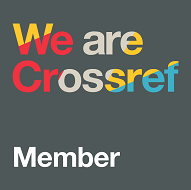Developing Online Learning Application for Programming Language
Abstract
.Online learning is one of the most practical and promising learning alternatives nowadays. Flexible time and low cost of online learning are advantages that offline learning does not have. In addition, in online learning, each student can enrol the material according to their level, interest and abilities. This study aims to build an online learning application for programming language. The method used in this study was Scrum software development. Scrum is one of the Agile method in software development. The system design using use case diagram resulted 3 actors and 8 use cases. The product backlog resulted in this study was five backlogs. The sprint composed based on product backlog result 4 sprints in total 120 days’ work. All five product backlogs were built successfully using Scrum. This system can be an alternative in learning programming language that offers the flexibility to the student, based on their ability and time.
Full Text:
PDFReferences
B. H. Khan, Web-based instruction. Englewood Cliffs, NJ: Educational Technology Publications, 1997.
S. Carliner, An Overview of Online Learning. Armherst, MA: Human Resource Development Press, 1999.
D. G. Oblinger and J. L. Oblinger, “Educating the Net Generation,” Educause, 2005. [Online]. Available: https://www.educause.edu/ir/library/PDF/pub7101.PDF. [Accessed: 18-May-2019].
V. Arkorful and N. Abaidoo, “The role of e-learning, advantages and disadvantages of its adoption in higher education,” Int. J. Instr. Technol. Distance Learn., vol. 12, no. 1, pp. 29–42, 2015.
E. N. Ekwonwune and D. C. Edebatu, “Design and Implementation of an Online Course Management System,” J. Softw. Eng. Appl., vol. 12, no. 2, pp. 21–33, 2019.
T. Kaewkiriya, “A design and development of e-learning content for multimedia technology using multimedia game,” Int. J. Softw. Eng. Appl., vol. 4, no. 6, p. 61, 2013.
T. Nguyen, “The effectiveness of online learning: Beyond no significant difference and future horizons,” MERLOT J. Online Learn. Teach., vol. 11, no. 2, pp. 309–319, 2015.
C. Watson, F. W. Li, and R. W. Lau, “Learning programming languages through corrective feedback and concept visualisation,” in International Conference on Web-Based Learning, 2011, pp. 11–20.
J. Swacha and P. Baszuro, “Gamification-based e-learning platform for computer programming education,” in X world conference on computers in education, 2013, pp. 122–130.
B. B. Morrison and B. DiSalvo, “Khan academy gamifies computer science,” in Proceedings of the 45th ACM technical symposium on Computer science education, 2014, pp. 39–44.
N. K. Rad and F. Turley, The Scrum Master Training Manual. Management Plaza, 2013.
A. A. Cholid, H. Elmunsyah, and S. Patmanthara, “Pengembangan Model Web Based Learning pada Mata Pelajaran Jaringan Dasar Paket Keahlian TKJ pada SMKN Se-Kota Malang,” J. Pendidik. Teori Penelitian, dan Pengemb., vol. 1, no. 5, pp. 961–970, 2016.
P. K. Nashiroh, W. Kamdi, and H. Elmunsyah, “The effectiveness of web-programming module based on scientific approach to train logical thinking ability for students in vocational high school,” in AIP Conference Proceedings, 2017.
H. R. Kurniawan, H. Elmunsyah, and M. Muladi, “Perbandingan Penerapan Model Pembelajaran Project Based Learning (PJBL) dan Think Pair Share (TPS) Berbantuan Modul Ajar Terhadap Kemandirian dan Hasil Belajar Rancang Bangun Jaringan,” JP (Jurnal Pendidikan) Teor. dan Prakt., vol. 3, no. 2, pp. 80–85, 2018.
T. H. Wang, “Developing an assessment-centered e-Learning system for improving student learning effectiveness,” Comput. Educ., vol. 73, pp. 189–203, 2014.
DOI: http://dx.doi.org/10.17977/um010v3i12020p023
Refbacks
- There are currently no refbacks.
 | Letters in Information Technology Education (LITE) |

1.png)
1.png)
4.png)
1.png)
.png)
.png)

3.png)
1.png)
1.png)

3.jpg)